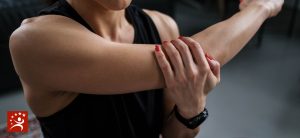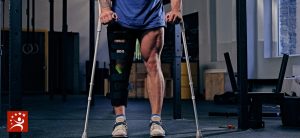Some health conditions, diseases, and injuries can have long-lasting effects on the bones and joints. One example of this is boutonnière deformity, which can permanently disfigure your finger. Boutonnière deformity may appear immediately after an injury but can also present 1-3 weeks after the finger has been injured. This condition becomes more difficult to correct if the deformity is left untreated for more than three weeks. That’s why it is always advisable to consult a specialist as quickly as possible to find out the root cause of it and prevent further damage. The place to get the quickest diagnosis and best care is at the Colorado Center of Orthopaedic Excellence in Colorado Springs, Colorado.
OVERVIEW
Boutonnière deformity can happen to anyone. Someone can even be born with it. If a tendon in the hand called the central slip extensor is injured, a boutonnière deformity may develop. Tendons are tissues made up of bundled fibers that connect muscle to bone to allow for movement. The central slip extensor goes to the middle joint of the finger or toe. In boutonnière deformity, an injury tears the tendon, and a slit appears. If this situation isn’t corrected, the middle of the finger will remain bent, and the tip of the finger will stick out. It’s called a boutonnière deformity because the slit in the tendon looks like a buttonhole with the bone showing. “Boutonnière” means buttonhole in French.
ABOUT THE FINGER
Each finger is made up of three bones, each called a phalanx. The fingertip is the distal phalanx, the middle phalanx is the center, and the proximal phalanx is located next to the hand. Extensor tendons attach to the middle and distal phalanges. The extensor tendon mechanism on the back of a finger is an extremely delicate and complex structure. The tendon divides into three slips or bands, which insert into different bones in the finger. There are two lateral bands and one central slip. Because the bands lie above the center of rotation of both joints, they act to extend or straighten the finger.
WHAT IS BOUTONNIÈRE DEFORMITY?
Boutonnière deformity is the result of an injury to the tendons that straighten the middle joint of the finger. The result is that the middle joint will not straighten while the fingertip bends back. It is also called a “central slip injury.” Up to 50% of patients with rheumatoid arthritis develop a boutonniere injury in at least one digit. It can also happen if the tendons in the finger are hit or cut (for instance, if the hand gets stepped on or crushed in a door). When this happens, the boutonnière deformity can be called a “jammed finger.” There are complications from boutonniere deformity that may happen with or without treatment. These include long-term swelling and stiffness, arthritis after the injury, impaired joint movement, and a greater chance of damaging the joint again. In rare occasions, boutonniere deformity can affect the toe.
CAUSES
While boutonniere deformity is most frequently caused by rheumatoid arthritis, there are other potential causes. It can result from an injury that typically occurs after a sharp blow to the central slip, such as in a work or sports injury. Football and basketball-related injuries are the most common. A severe cut to the top of the finger can cause the tendon to be severed from the bone. In some severe cases, the bone may come out through the cut. Birth defects or genetic conditions such as Ehlers-Danlos syndrome can cause boutonniere deformity. Osteoarthritis is also known to cause it.
SYMPTOMS
The most common symptom of a boutonniere deformity is pain on the top of the middle finger after experiencing an injury. Other symptoms of boutonniere deformity include:
- Inability to straighten the finger at the middle joint
- Inability to bend the finger down
- Swelling at the middle joint of the finger
- Joints are stiff, which get worse over time
- Feeling the finger has been jammed because of pain and swelling
NON-SURGICAL TREATMENTS
Splinting:
The most common treatment for boutonniere deformity involves stabilizing the finger with a splint that rests on the middle joint (also called the PIP joint). The splint creates pressure to straighten and immobilize the finger. The splint will be worn continuously for four to six weeks, and after that, it might need to be worn at night for a few weeks.
Exercise and hand therapy:
Because boutonniere deformity can affect the finger’s range of motion and flexibility, exercises might be recommended to help strengthen the affected finger
Medications:
If boutonniere deformity is due to rheumatoid arthritis or osteoarthritis, wearing a splint and doing exercises may not be enough, in which case oral medication and/or steroid injections could be prescribed to reduce inflammation and swelling.
WHEN IS SURGERY INDICATED?
In some cases, boutonnière deformities require surgery. This is more likely in cases caused by advanced rheumatoid arthritis or for patients with displaced bone fragments or severed tendons. Surgery may also be required for an injured tendon if a penetrating laceration or additional finger damage is involved. There are two surgery options for addressing a boutonniere deformity. The first is arthrodesis, a surgery in which the doctor fuses the bones at each joint. If a boutonniere deformity causes severe pain, this surgery offers stability and less pain. However, it also leaves one with less flexibility in the joint. Another surgical option is arthroplasty. This involves removing the damaged joint and replacing it with an implant. Arthroplasty is used if the condition is severe. The goal of this surgery is to relieve pain while restoring functions to the fingers.
GETTING THE RIGHT DIAGNOSIS. GETTING THE RIGHT DOCTOR.
When you damage your finger, several different injuries may occur. While pain and swelling are common in finger injuries, they don’t necessarily point to a boutonniere deformity. Several other finger injuries appear similar to them. The treatments, however, are not always similar. This is why you need to see an orthopedic specialist with extensive experience in diagnosing and treating boutonnière deformities, like the experts at the Colorado Center of Orthopaedic Excellence in Colorado Springs, Colorado. Boutonniere deformity can typically be diagnosed during a thorough physical examination; however, if the doctor suspects a break, they may request an X-ray to help determine what the next steps should be. An X-ray also shows the tendons so the doctor can see if the top tendon is out of place and causing a boutonniere deformity. An early diagnosis is key, as left untreated, the deformity can progress and become permanent. If you’re ready to choose orthopedic professionals that offer state-of-the-art treatment and highly personalized care, you need to look no further than CCOE. Schedule an appointment today.

















